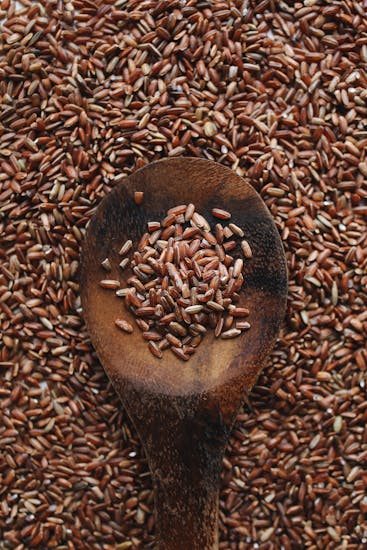Probiotics and Fiber: How They Work Together for a Healthy Gut

A healthy gut is key to overall well-being, and two essential elements play a vital role in maintaining it: probiotics and dietary fiber. Together, they create a synergistic relationship that promotes gut health, supports digestion, and enhances immunity. Let’s explore how probiotics and fiber work in harmony, how they differ, and why incorporating both into your diet can lead to a healthier lifestyle.
Comparing Fiber and Probiotics
This topic addresses the similarities and differences between fiber and probiotics, focusing on their functions in digestive health.
- Fiber: A macronutrient that acts as a prebiotic, nourishing beneficial bacteria in the gut.
- Probiotics: Live microorganisms that directly replenish and balance the gut microbiota.
While both support digestive health, probiotics and fiber differ in their mechanisms. Probiotics deliver live bacteria, whereas fiber feeds these bacteria and aids digestion. Rather than choosing between them, integrating both into your diet maximizes gut health benefits.

Health Benefits of Fiber and Probiotics
Fiber and probiotics offer complementary health benefits:
- Digestive Health: Probiotics help balance gut bacteria, while fiber, including soluble and fermentable fibers, promotes regularity and prevents constipation.
- Gut Health: Together, they support the production of short-chain fatty acids (SCFAs) that maintain the intestinal lining and reduce inflammation.
- Immune System: Probiotics boost immune function, and fiber helps maintain gastrointestinal microbiota diversity.
Potential side effects include gastrointestinal discomfort when fiber intake is too high or sudden. Moderation and gradual dietary changes are key.
Prebiotics and Dietary Fiber
Prebiotics, a subset of dietary fiber, specifically feed beneficial gut bacteria. Examples include:
- Inulin: Found in chicory root and bananas.
- Fructans: Present in garlic and onions.
- Galacto-oligosaccharides: Found in legumes.
Prebiotics encourage the growth of probiotics, creating a symbiotic relationship crucial for maintaining a healthy gut microbiome.
Recommended Intake
Optimal consumption of probiotics and fiber depends on individual needs:
- Fiber: Health Canada recommends 25 grams per day for women and 38 grams per day for men.
- Probiotics: Dosage varies by strain but often ranges from 1 billion to 10 billion CFUs daily.
Incorporating probiotics and prebiotics through food and supplements like Bioma can help meet these recommendations.

Understanding Fiber
Dietary fiber is categorized into:
- Soluble Fiber: Forms a gel-like substance, slows digestion, and stabilizes blood sugar levels. Found in oats, apples, and psyllium.
- Insoluble Fiber: Adds bulk to stool and prevents constipation. Found in whole grains, carrots, and lignin-rich foods like flaxseeds.
Both types of fiber contribute to overall digestive health.
Understanding Probiotics
Probiotics are live bacteria found in:
- Fermented Foods: Such as yogurt, kimchi, and tempeh.
- Probiotic Supplements: Available as pills, gummies, or powders, delivering targeted strains for gut health.
They support gut microbiota diversity, enhance the immune system, and produce beneficial SCFAs during fermentation.
The Symbiotic Relationship Between Probiotics and Fiber
The interaction between probiotics and fiber is a prime example of symbiosis. Fiber serves as a prebiotic, providing nourishment for probiotics and helping them thrive in the gut. When probiotics feed on dietary fiber, they produce SCFAs like butyrate, acetate, and propionate, which have anti-inflammatory properties and support the intestinal lining.
This relationship offers several benefits:
- Enhanced Digestion: Probiotics break down fiber that humans cannot digest, aiding in nutrient absorption and bowel regularity.
- Improved Gut Microbiome Diversity: Fiber-rich diets promote a diverse microbial environment, which is linked to better overall health.
- Strengthened Immune System: SCFAs produced by probiotics boost immune responses and reduce the risk of infections.
Incorporating Probiotics, Prebiotics, and Fiber Into Your Diet
To achieve the full benefits of probiotics, prebiotics, and fiber, a balanced diet is essential. Here are some tips:
- Start your day with a fiber-rich breakfast, such as oatmeal topped with probiotic-rich yogurt.
- Include fermented foods like kimchi or pickles as side dishes to meals.
- Snack on fiber-packed fruits like apples or pears paired with probiotic drinks like kefir.
- Consider taking a probiotic supplement, available in forms such as gummies, pills, or powders, to ensure consistent intake of beneficial bacteria.
- Incorporate prebiotic foods like garlic, onions, and bananas to nourish existing probiotics in your gut.
Who Can Benefit the Most?
People with digestive disorders, such as irritable bowel syndrome (IBS) or inflammatory bowel disease (IBD), may find significant relief by combining probiotics and fiber. Additionally, those aiming to improve immunity, manage weight, or enhance mental health can also benefit from this trio of gut-supporting elements.
Final Thoughts
Probiotics and fiber are the dynamic duo for a healthy gut, while prebiotics provide essential support by feeding beneficial bacteria. By including these elements in your daily routine through a combination of natural food sources and high-quality supplements like Bioma, you’re not just improving your digestive health but also supporting overall well-being. Whether you prefer gummies, pills, or whole foods, the key is consistency and variety in your diet.
Related articles



